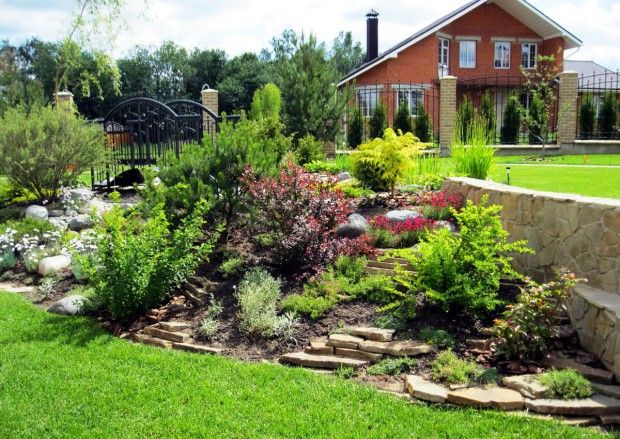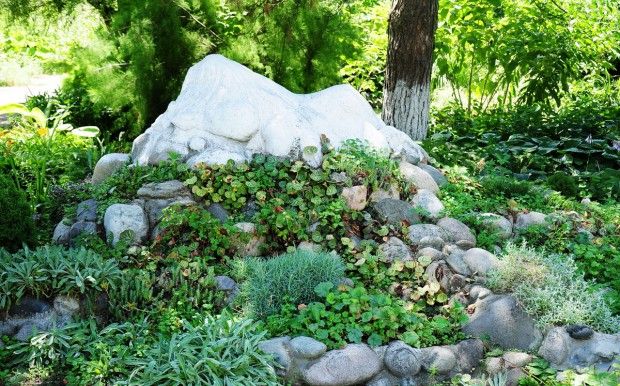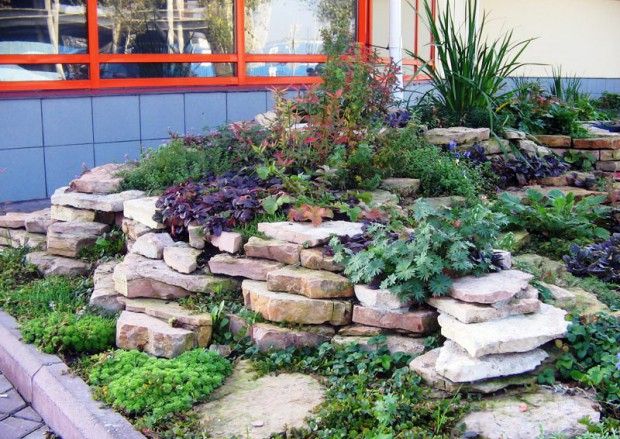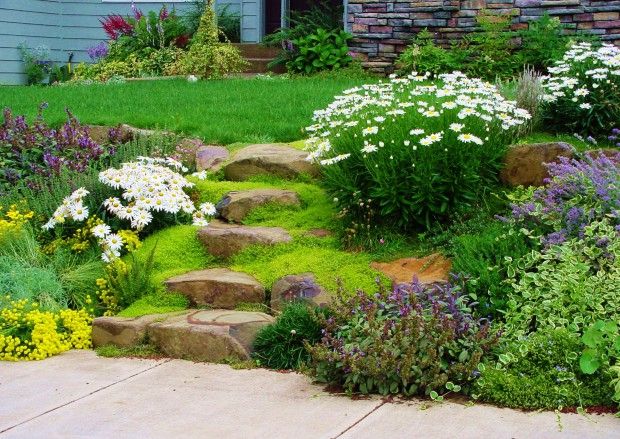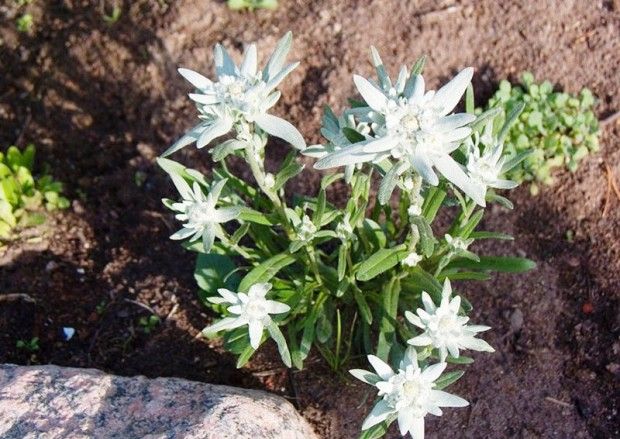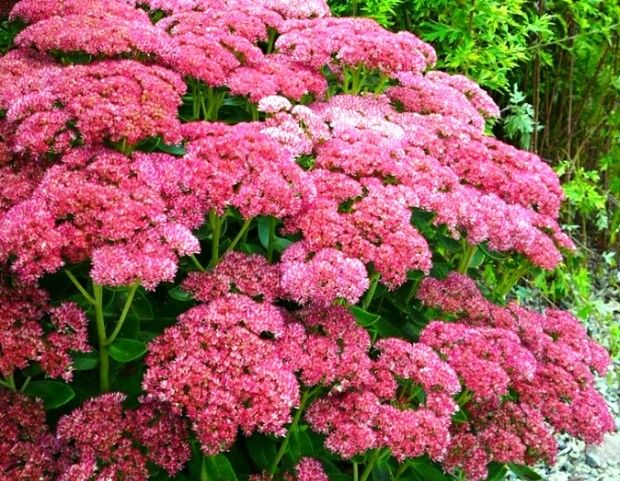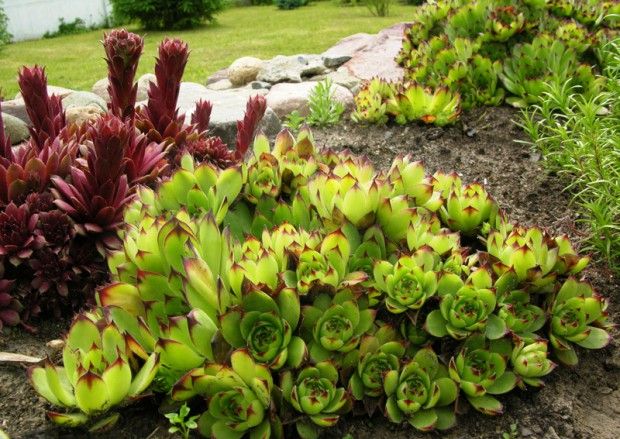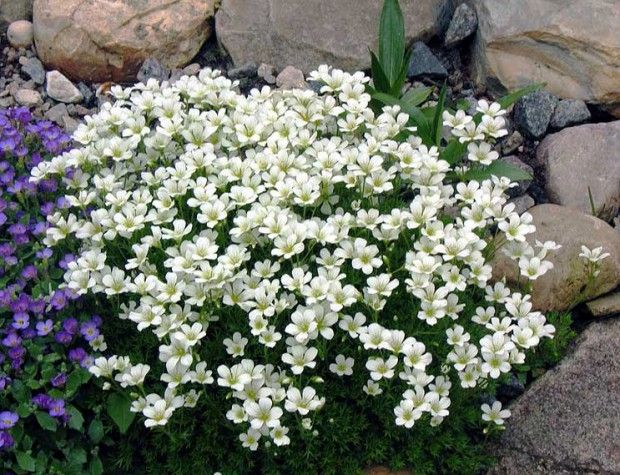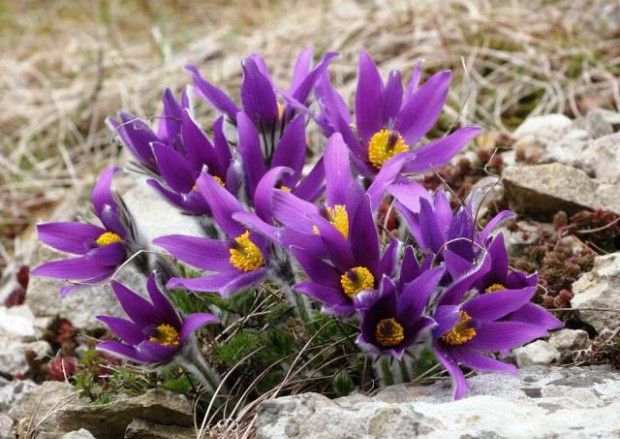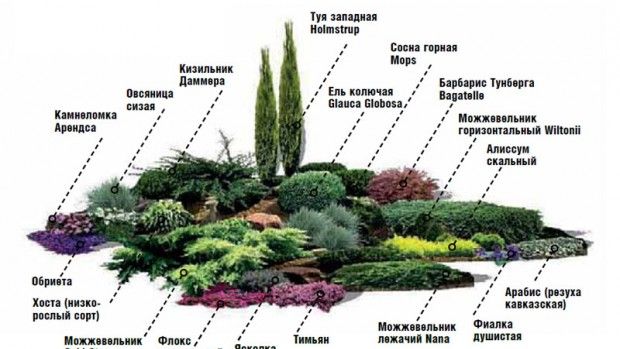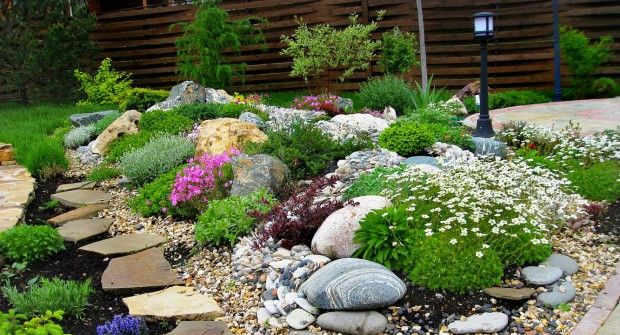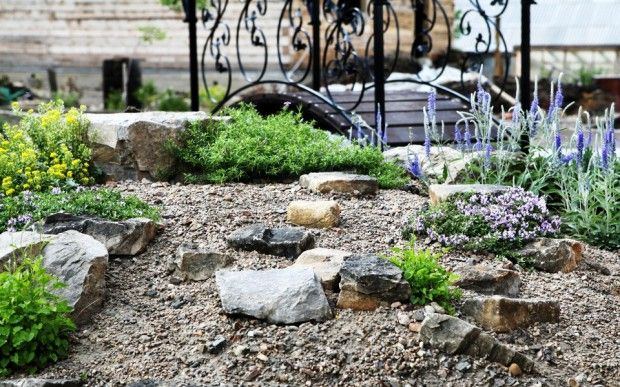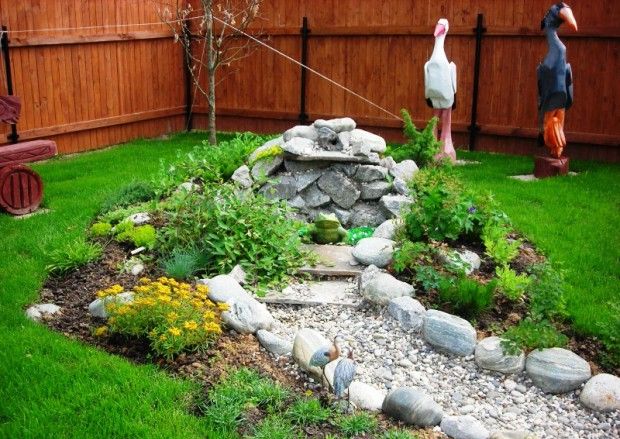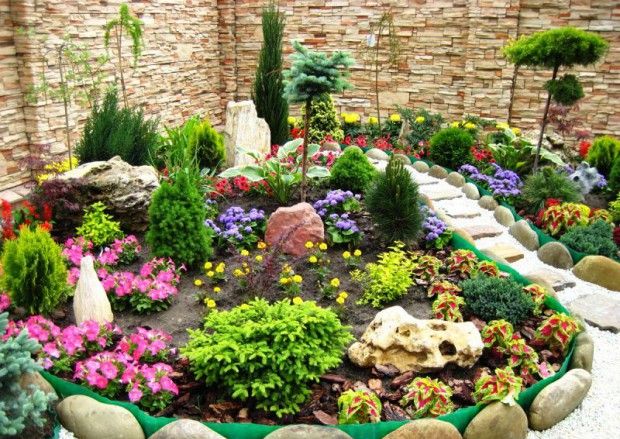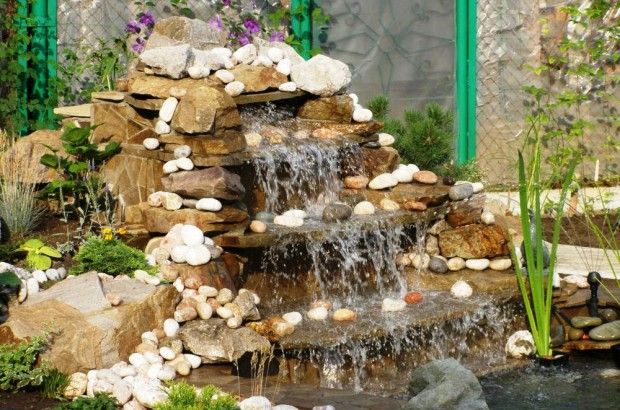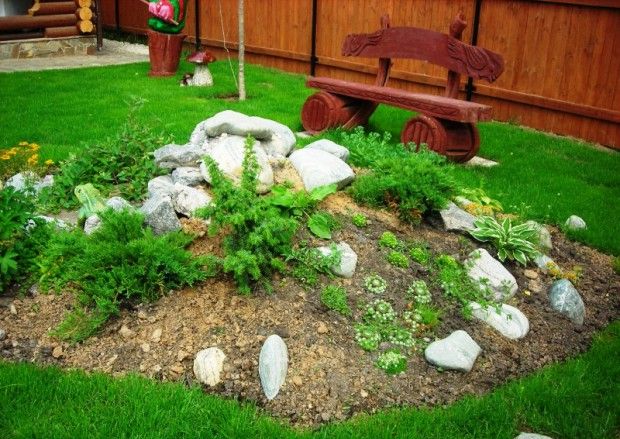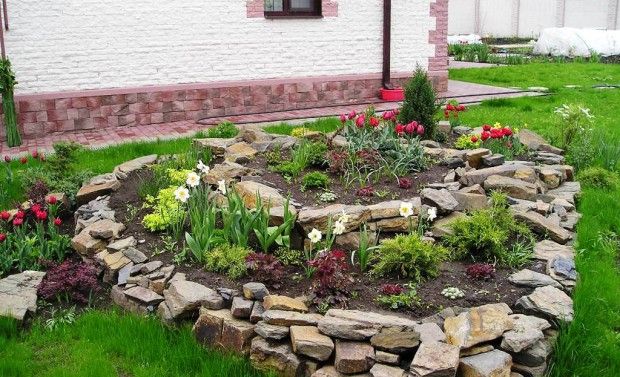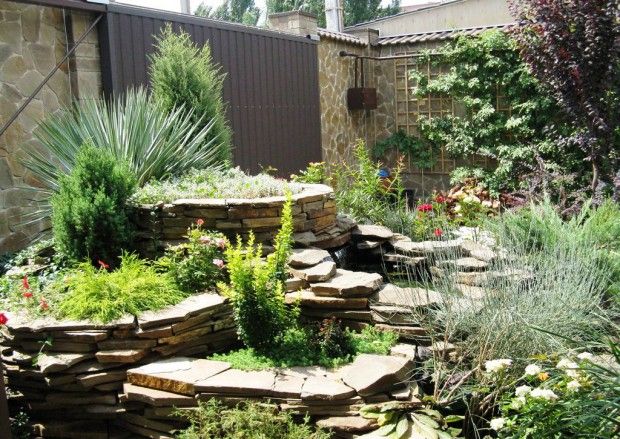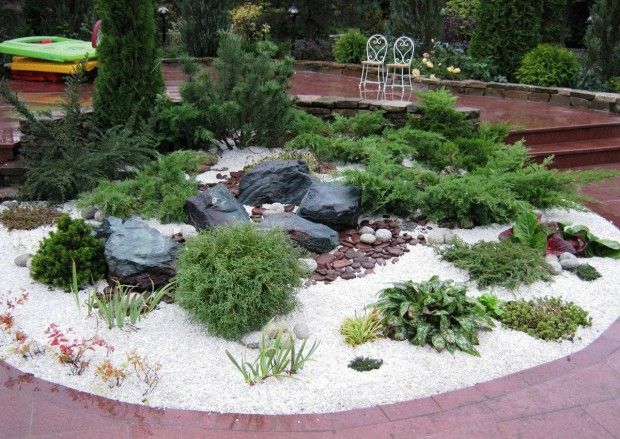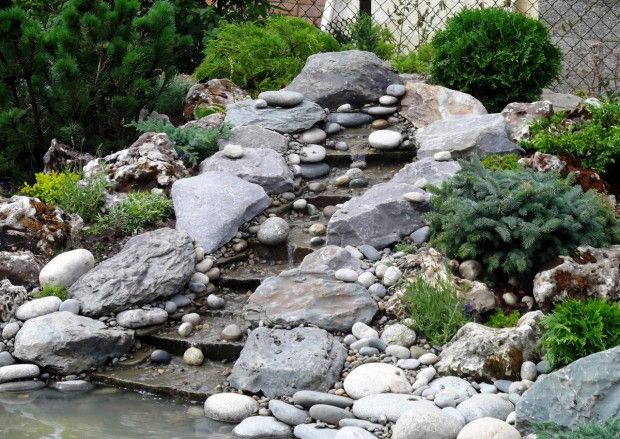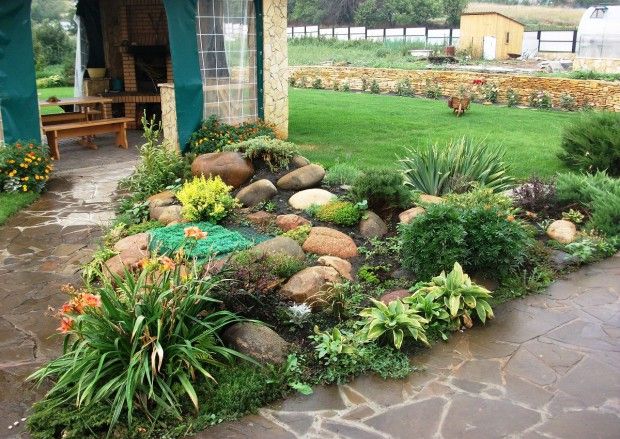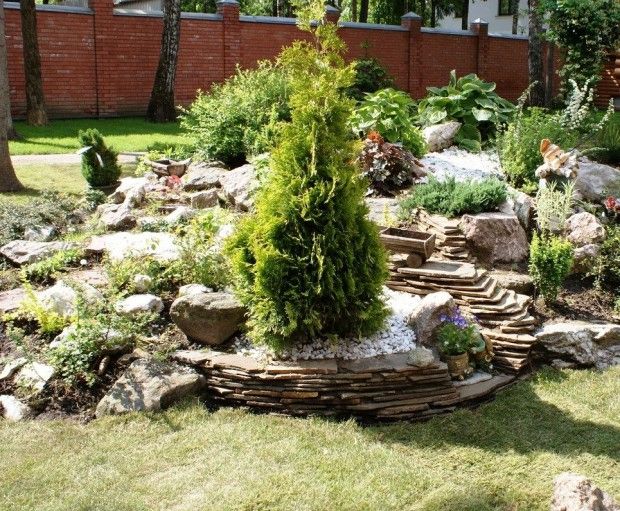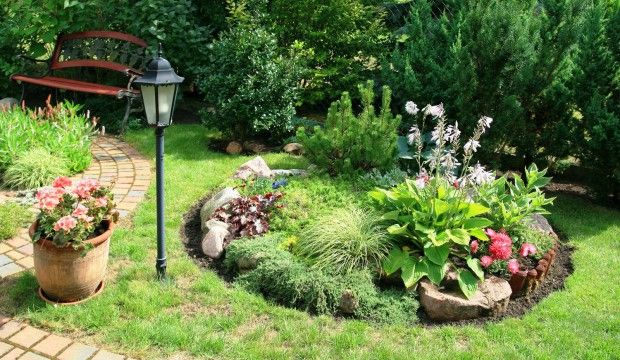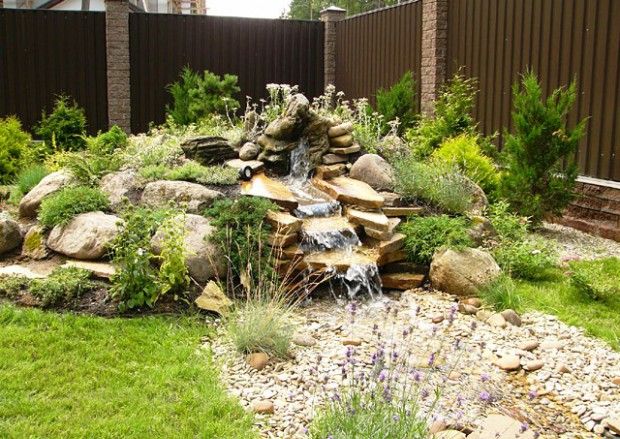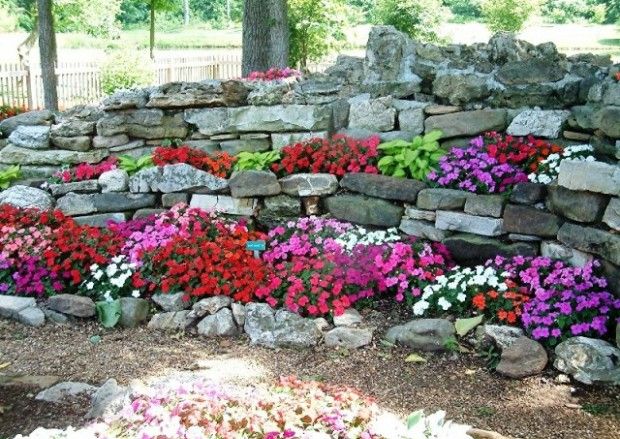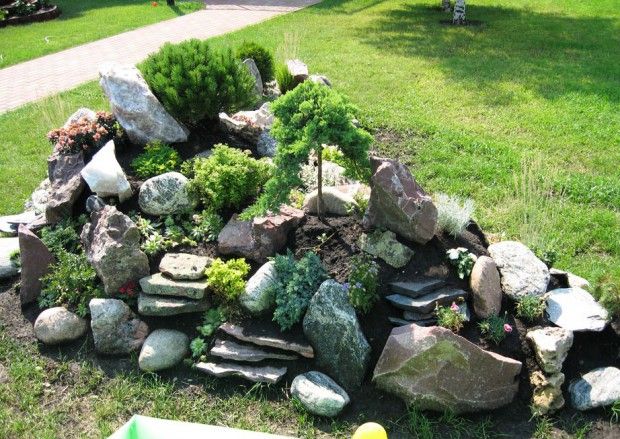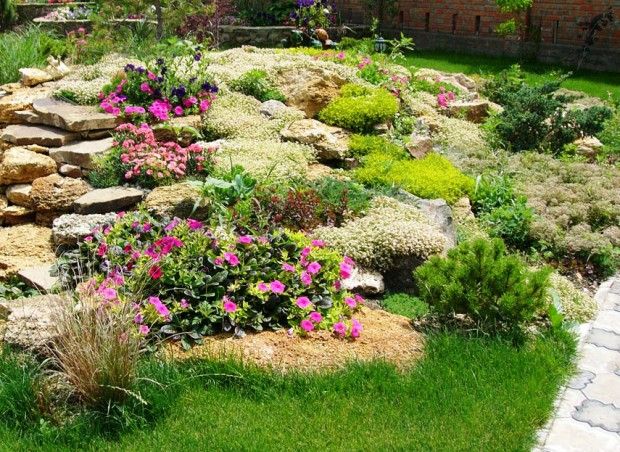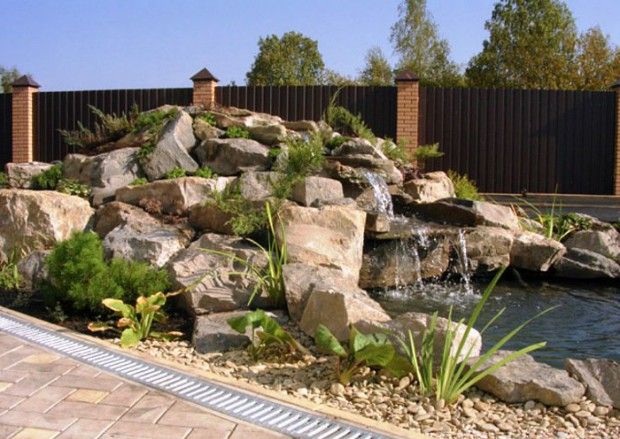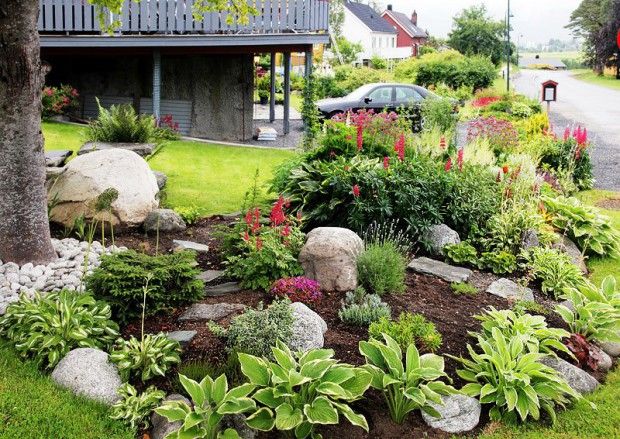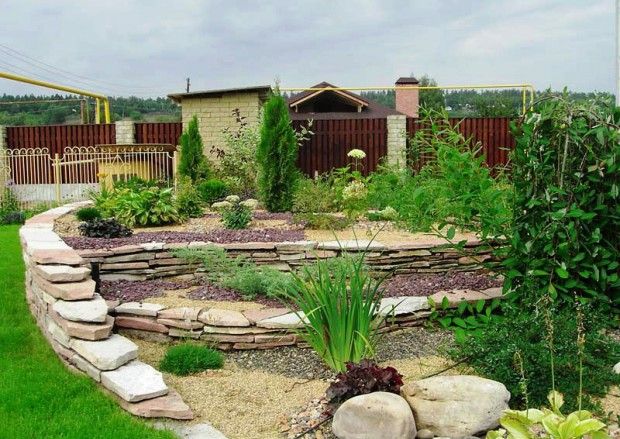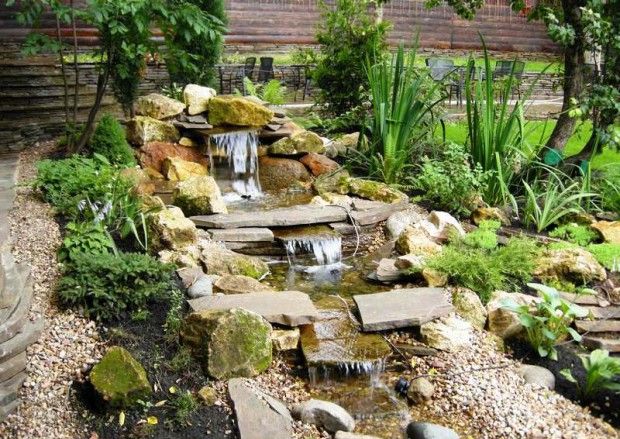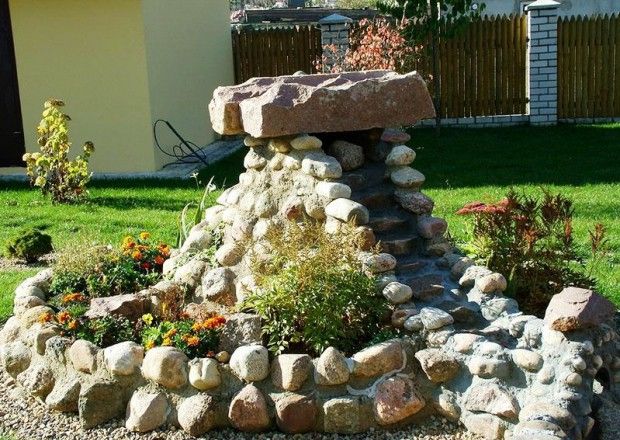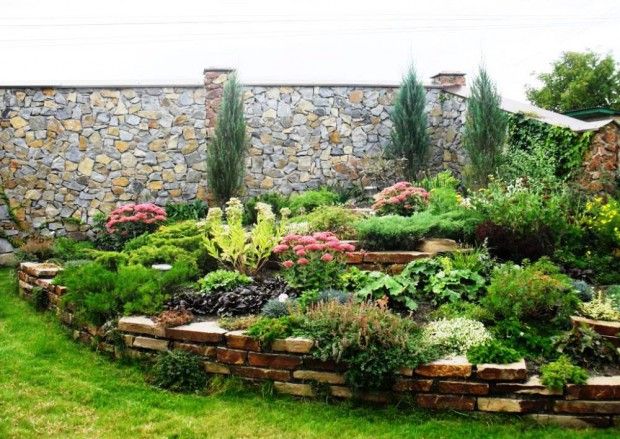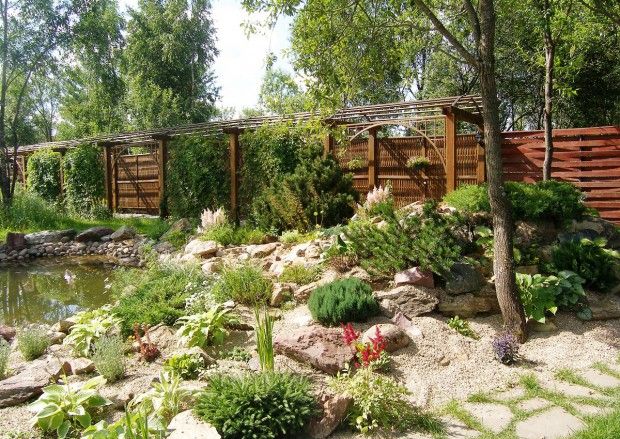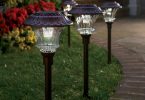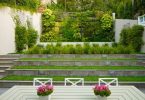Alpine slide. What a romantic title! It literally breathes freshness and even smells of emerald green grass, which covers the mountain slopes. The atmosphere of pristine pure nature can be successfully recreated at a summer cottage. And the rock garden will help in this – an original composition of stones and plants, which has recently been very actively used by masters of landscape design.
Features of the alpine slide
We can say that the projects of the alpine slides are absolutely unique design solutions. There are general rules for their arrangement, but the embodiment of an idea is a completely creative activity. An infinite number of interesting variations can be created from the same set of materials..
A required attribute of a rock garden is a large stone (one or more). It is a symbol of a mountain peak. And its conditional slopes are planted with low-growing shrubs and plants that are most consistent with the mountain climate.
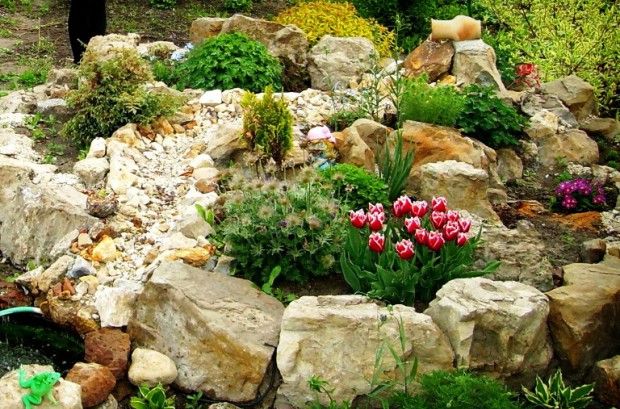
Do not naively believe that a pile of stones and vegetation making its way between them can claim the proud title of an alpine slide. The arrangement of such a landscape composition will require a lot of effort, financial investments and a flight of imagination. To make it look natural and harmonious, you need space. The larger the scale, the more organic, as if in a natural environment.
From the history of the rock garden
Japan is considered to be the birthplace of stone gardens. The construction of the grand rock gardens began there a thousand years ago. On the islands of the Land of the Rising Sun there has always been a shortage of free areas of the earth – probably that is why they liked to create beauty in small areas there too. According to the Japanese canons of beauty, the true value is contained in natural phenomena. The combination of the hardness of the stone and the tenderness of flowers creates an unusually enchanting duet of true beauty.
Alpine slides appeared in European countries only in the 16th century. At that time, outlandish plants transplanted from the natural mountain environment were grown on such flower beds. The fashion for them came to Russia in the XVIII century. Today, many gardeners are thinking about how to build an alpine slide with their own hands on their own plot. After all, this is a very unusual decoration of any summer cottage..
Rock garden and rockery: similarities and differences
Confusion often arises between the two. Let’s figure out why. Rock garden and rockery are two different types of flower beds. More precisely, there are two methods (or principles) of arranging a flower bed. In both cases, stones and plants are used.
However, rockery can be called a stone garden in the classical sense. The predominant part of such a composition is occupied by a stone. And only one breed is used..
The stones are laid out in parallel stripes or in random order. This chaotic technique creates the illusion of a natural environment. Rockery is also complemented with vegetation, but here it acts as a background, plays a secondary role.
In a rock garden, flowers and grass are always in the foreground. They catch the eye with a variety of colors, surprise with a combination of opposites.
How to choose plants for a rock garden
We have already said that it is better to plant unpretentious plants on an alpine slide. In this decorative corner of the garden, flowers that do not need careful care will look most harmonious..
Indeed, the atmosphere in the mountains is harsh, and each individual stem has to fight for its place in the sun. Under gusts of wind or blows of pouring rain, only strong plants survive, which are able to fight for their own existence.. When planning to break a rock garden, think about what flowers and shrubs you would like to decorate the cottage.
If you want to update the appearance of the flower bed every year, plant annuals. And to get a stable result, give preference to brightly colored perennial grasses. Also, think about the changing seasons of flowering, because some plants delight us earlier, others later..
Here are some specific examples. These plants for the alpine slide are literally created by nature itself:
1. Edelweiss
The symbol of the Alps, which fits perfectly into the Russian landscape. This perennial is frost-resistant, no cold does not care for him. Edelweiss lines the slopes of the alpine slide with rugs, the diameter of which reaches 20 cm.It blooms in June-July.
2. Sedum
There are several types of this humble plant. It is absolutely unpretentious, securely fixed on any soil with its creeping stems. Under the influence of sunlight, sedum leaves become brighter, as if they are tanning. It can be used to decorate the edging of a rock garden, since it destroys weeds within its radius «rug».
3. Rejuvenated
The most popular inhabitant of the alpine slides. Its fleshy leaves will in themselves become an adornment of any flower bed, and light purple flowers can compete in modest beauty with many of their relatives..
4. Saxifrage
In the spring, these cute rugs are literally strewn with small flowers. The plant prefers darkened areas, even covers stones with its green nets.
5. Backache
An ideal perennial for the alpine slide of the buttercup family. People call it sleep-grass. One of the first to bloom in early spring. Drainage soil is favorable for lumbago, in such conditions it actively grows.
Shrubs and flowers are also suitable for a rock garden:
- juniper (various types),
- dwarf barberry,
- Japanese spirea,
- aquilegia,
- alpine aster,
- viola horned,
- crocus,
- phlox subulate.
By combining different types of plants, you can create alpine slides whose design will be absolutely unique. It is important to create the effect of the atmosphere of the mountains due to the multi-tiered design. For example, this option for the arrangement of shrubs and flowers can claim the title of classic.
An ideal place for arranging a rock garden
Having made the decision to build a rock garden, try to critically examine your hacienda. Of course, a flower garden can decorate any corner of it. But in this case, you need to choose a spacious area that is well illuminated by natural rays..
It is also important to think about how the future alpi flower bed will be viewed. After all, such a beauty created with your own hands, you probably want to show guests.
When choosing a location, consider the nature of the soil. On sandy soil, the arrangement of an alpine slide will be less problematic, since it can be broken directly on the ground. But for clay or oily soil, additional work will need to be done – to prepare drainage.
Substrate preparation: drainage
The indication for site drainage is not only the nature of the soil. Mountain plants do not like when water stagnates and to avoid this, experienced designers recommend making a special base for the rock garden. It is necessary to remove the top soil cover, but it is not worth going deeper than 30 cm.
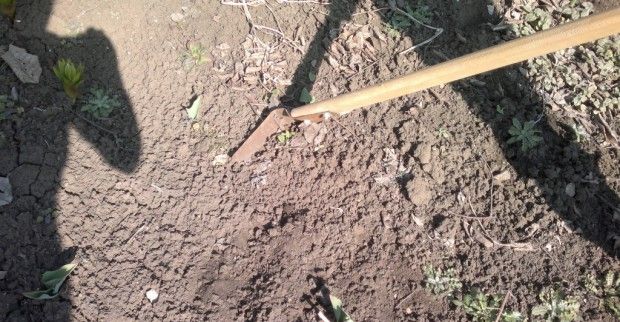
You can make not a solid foundation pit, but several holes. Then fill them with crushed stone (as an option, construction waste, broken brick, fine gravel will do just fine). Then sand is poured, and earth is on top. Each base layer must be watered and allowed to dry..
Soil mix and laying stones
To form a rock garden mound directly, it is necessary to prepare a specific mixture. In equal proportions, they combine clean soil, coarse sand and crushed humus.
By the way, in order for the alpine slide in the garden to be really as natural as possible, use the soil that the mole brings to the surface as the soil. Such black mounds are often found in forest plantations, in abandoned areas.. In the cutaway rock garden diagram, you can see a mound from the soil mixture.
It is marked in yellow. As a rule, the height of the slide is 1 meter on average. Based on this picture, you can create a multi-tiered flower bed using several stones..
After the drainage is completed and the mound is formed, you need to take a break from construction work. Two or three weeks should pass for all layers to slowly compact and shrink.. The stones are arranged in tiered order. They must create the illusion of rock emerging to the surface..
To achieve this, you need to bury them in the ground at least a third. So you get an amazing effect of the meeting of strength and tenderness, which is symbolized by the stone and flowers..
The size of the tiers decreases from bottom to top, like a pyramid. At the lowest point of each individual tier, a massive stone should be laid so that the structure is strong and small stones do not slide down the slope. Making alpine slides with their own hands, amateur designers form an odd number of tiers. Schematically, the placement of stones looks like this:
The figure shows that the stones should not be laid symmetrically, because in the natural environment we do not observe such geometric accuracy. The space between them will be filled with flowers, so try to leave enough space. An alpine painting will look organic if you use stones similar in texture and color.
Construction of the rock garden peak
There are two options for decorating the top of an alpine hill. In the center of the composition, you can erect the largest, most massive stone. Such a simple technique will protect the rock garden from soil erosion under the influence of precipitation.. Or shape the peak with a few small stones. They can be tightly nested nearby, and also – build a pyramid.
Vegetation decoration
The laborious process of creating an alpine slide ends with magic. And how else can you call that amazing action when a mound of earth «settled» plant life! This procedure can be carried out in spring and autumn, up to frost. First you need to add a potting mix and carefully plant shrubs or flowers. Here you should be guided exclusively by the rules of your own taste, everyone sees in their own way the color scheme of the rock garden.
Finally, I would like to note that, like a flower bed, an alpine slide cannot be decorated with artificial accessories. For example, glass or plastic, as well as various garden figurines will simply not be appropriate here. Remember that a flower garden in this style is designed to create the natural atmosphere of the mountains. Stones and plants are completely self-sufficient decorative elements in this case, and do not need a variety of tinsel.

